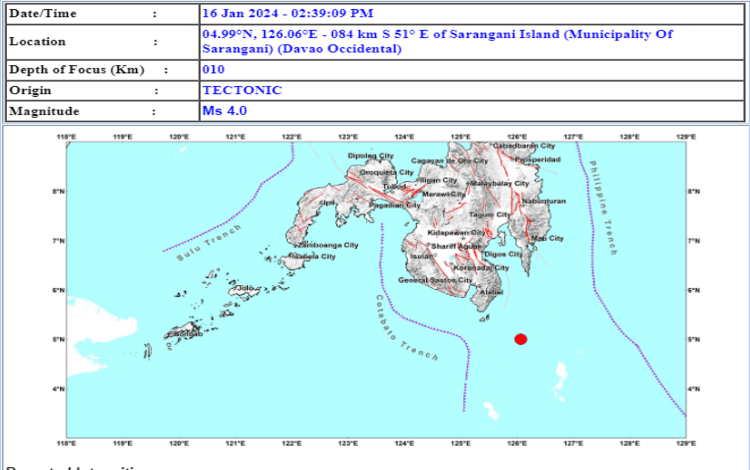On Tuesday afternoon, January 16, residents of the province of Davao Occidental experienced an earthquake with a magnitude of 4.0, according to the report from the Philippine Institute of Volcanology and Seismology (Phivolcs). This incident instilled fear among the people, but according to experts, it is not expected to cause severe damage.

Based on Phivolcs’ assessment, the earthquake originated from tectonic activity and occurred at around 2:39 in the afternoon. It is worth noting that tectonic earthquakes occur beneath the Earth’s surface, where energy is released by the movement of tectonic plates. In this case, the epicenter of the earthquake was identified to be 84 kilometers southeast of Sarangani Island in the municipality of Sarangani, Davao Occidental, with a depth of 10 kilometers below the surface.
Despite the moderate strength of the earthquake, Phivolcs does not anticipate it to generate aftershocks. Aftershocks are typically tremors that follow a significant earthquake and can induce additional fear and damage in affected areas. Fortunately, no such occurrences are expected in this case.

Due to the remote location of the epicenter and the depth of the earthquake, it is also not anticipated to cause significant damage to properties and infrastructure in the affected area. However, authorities and residents are reminded to remain vigilant and prepared for any possible developments.
This event is becoming a part of everyday life in the Philippines, a country situated in the Pacific Ring of Fire, where numerous active volcanoes and earthquakes commonly occur. This occurrence serves as a reminder to every one of the need to be prepared and knowledgeable about natural disasters to ensure the safety of each individual.
